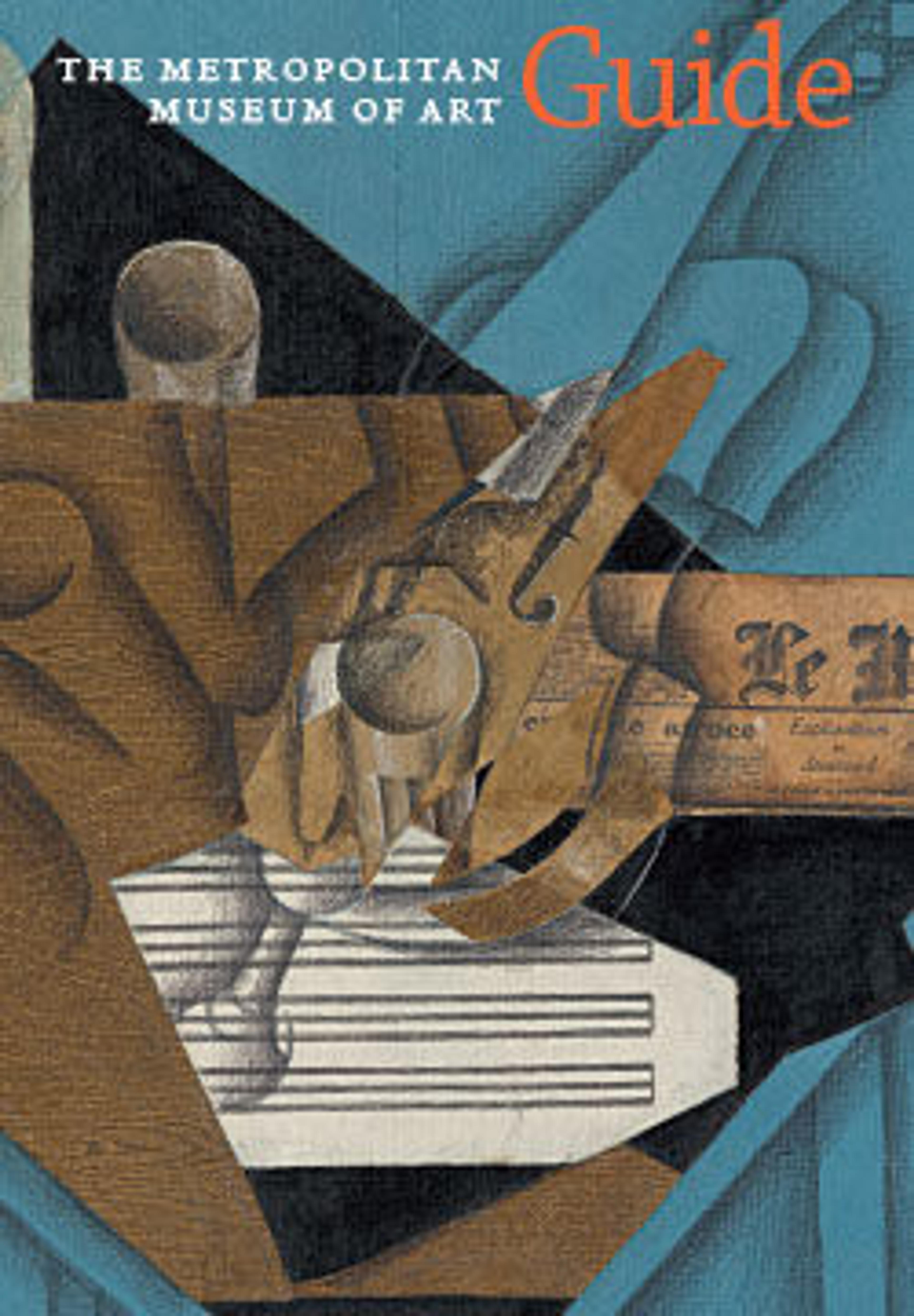English
Stela of the Steward Mentuwoser
This rectangular stone stela honors an official named Mentuwoser. Clasping a piece of folded linen in his left hand, he sits at his funeral banquet, ensuring that he will always receive food offerings and that his family will honor and remember him forever. To the right of Mentuwoser, his son summons his spirit. His daughter holds a lotus, and his father offers a covered dish of food and a jug that, given its shape, contained beer.
To show clearly each kind of food being offered, the sculptor arranged the images on top of the table vertically. The feast consists of round and conical loaves of bread, ribs and a hindquarter of beef, a squash, onions in a basket, a lotus blossom, and leeks. The low-relief carving is very fine. The background was cut away only about one-eighth of an inch. Within the firm, clear outlines, the sculptor then subtly modeled the muscles of Mentuwoser's arms and legs and the shape of his jaw and cheeks. The chair legs and the calf's head have also been carefully formed. The hieroglyphic inscriptions in sunk relief state that in the seventeenth year of his reign King Senwosret I presented the stela to Mentuwoser in appreciation of his loyal services. Mentuwoser's deeds are described at length. He was steward, granary official, and overseer of all manner of domestic animals, including pigs. He is described as a good man who looked after the poor and buried the dead. Senwosret's throne name, Kheperkare, appears within a cartouche in the middle of the top line.
The stela once stood at Abydos, the sacred pilgrimage center of the god of the underworld Osiris. Mentuwoser's image and the prayers on the stela were meant to bring him both rebirth and sustenance at the annual festivals honoring Osiris. At such festivals family members and other pilgrims would visit the commemorative chapels in which the stelae were set up, and at its end this stea's text addresses explicitly three groups of people: 1. any scribe who shall read the stela; 2. any person who shall hear the stela read aloud; 3. all people who shall approach it. It is thus suggested that, according to ancient Egyptian understanding, the written word—and its imagery—reached many more people than only just the fully literate.
Link to a blog about food in Ancient Egypt
Food and Feasts in Middle Kingdom Egypt
To show clearly each kind of food being offered, the sculptor arranged the images on top of the table vertically. The feast consists of round and conical loaves of bread, ribs and a hindquarter of beef, a squash, onions in a basket, a lotus blossom, and leeks. The low-relief carving is very fine. The background was cut away only about one-eighth of an inch. Within the firm, clear outlines, the sculptor then subtly modeled the muscles of Mentuwoser's arms and legs and the shape of his jaw and cheeks. The chair legs and the calf's head have also been carefully formed. The hieroglyphic inscriptions in sunk relief state that in the seventeenth year of his reign King Senwosret I presented the stela to Mentuwoser in appreciation of his loyal services. Mentuwoser's deeds are described at length. He was steward, granary official, and overseer of all manner of domestic animals, including pigs. He is described as a good man who looked after the poor and buried the dead. Senwosret's throne name, Kheperkare, appears within a cartouche in the middle of the top line.
The stela once stood at Abydos, the sacred pilgrimage center of the god of the underworld Osiris. Mentuwoser's image and the prayers on the stela were meant to bring him both rebirth and sustenance at the annual festivals honoring Osiris. At such festivals family members and other pilgrims would visit the commemorative chapels in which the stelae were set up, and at its end this stea's text addresses explicitly three groups of people: 1. any scribe who shall read the stela; 2. any person who shall hear the stela read aloud; 3. all people who shall approach it. It is thus suggested that, according to ancient Egyptian understanding, the written word—and its imagery—reached many more people than only just the fully literate.
Link to a blog about food in Ancient Egypt
Food and Feasts in Middle Kingdom Egypt
Artwork Details
- Title: Stela of the Steward Mentuwoser
- Period: Middle Kingdom
- Dynasty: Dynasty 12
- Reign: reign of Senwosret I, year 17
- Date: ca. 1944 B.C.
- Geography: From Egypt; Probably from Northern Upper Egypt, Abydos
- Medium: Limestone, paint
- Dimensions: H. 103 cm (40 9/16 in.); W. 50.5 cm (19 7/8 in.); Th. 8.3 cm (3 1/4 in.)
- Credit Line: Gift of Edward S. Harkness, 1912
- Object Number: 12.184
- Curatorial Department: Egyptian Art
Audio
3325. Stela of Mentuwoser
0:00
0:00
We're sorry, the transcript for this audio track is not available at this time. Please email info@metmuseum.org to request a transcript for this track.
More Artwork
Research Resources
The Met provides unparalleled resources for research and welcomes an international community of students and scholars. The Met's Open Access API is where creators and researchers can connect to the The Met collection. Open Access data and public domain images are available for unrestricted commercial and noncommercial use without permission or fee.
To request images under copyright and other restrictions, please use this Image Request form.
Feedback
We continue to research and examine historical and cultural context for objects in The Met collection. If you have comments or questions about this object record, please contact us using the form below. The Museum looks forward to receiving your comments.
